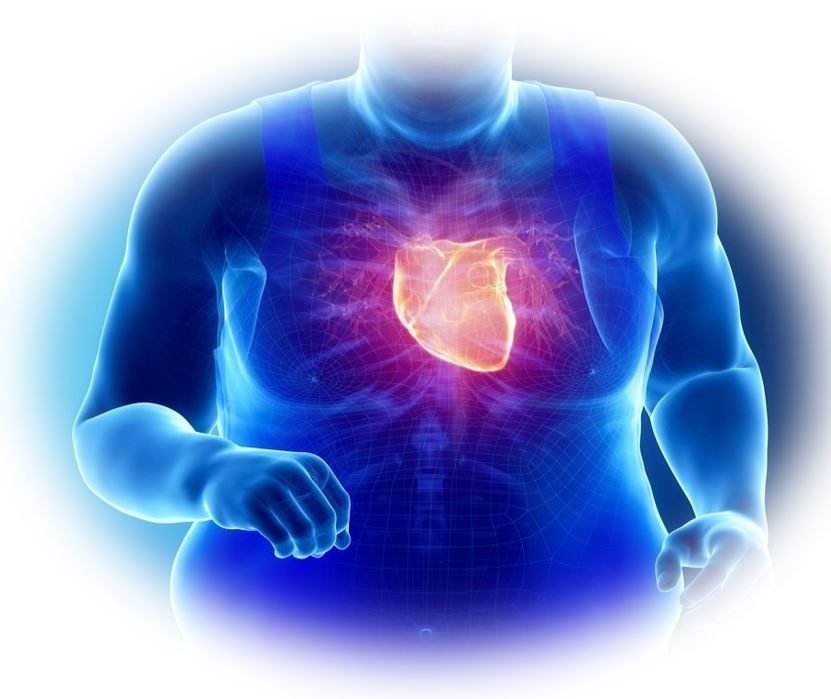Exercise Insufficient to Overcome CVD Risks of Overweight/Obesity
Physical activity cannot compensate adequately for the negative impact of excess body weight on cardiometabolic health.
The deleterious effects of excess body weight on cardiovascular health cannot be "undone" with physical activity.
This conclusion, which challenges the notion of a "fat but fit" phenotype in which high levels of cardiorespiratory fitness might mitigate the impact of overweight on cardiometabolic health, comes from a large population study published online in the European Journal of Preventive Cardiology. In fact, the study found that increased body mass index (BMI) is associated with a greater risk of cardiovascular disease (CVD) regardless of an individual's physical activity levels.
There is some evidence to suggest that being fat but fit might be associated with similar cardiovascular health to being "thin but unfit."

"This has led to controversial proposals for health policies to prioritise physical activity and fitness above weight loss," said study author Alejandro Lucia, MD, PhD, of the European University, Madrid, Spain, in a statement from the European Society of Cardiology. "Our study sought to clarify the links between activity, body weight, and heart health."
For the study, Lucia and colleagues used data from a patient cohort insured by a large occupational risk prevention company in Spain. Of the total 527 662 participants, the average age was 42 years (18-64) and 32% were women. All had data from annual medical examinations from 2012 to 2016.
Participants were categorized as normal weight (body mass index [BMI] 20.0-24.9 kg/m2), overweight (BMI 25.0-29.9 kg/m2), or obese (BMI 30.0 kg/m2 or above) and were grouped by level of physical activity (PA):
- Level 1: regularly active, defined as doing the minimum recommended for adults by the World Health Organization2 (WHO)
- Level 2: Insufficiently active (some moderate to vigorous physical activity every week but less than the WHO minimum)
- Level 3: Inactive (no exercise)
Data from medical examination records were used to determine cardiovascular health as reflected in 3 risk factors:
- Diabetes: medicated or glycemia >125 mg/dL
- Hypercholesterolemia: medicated or total blood cholesterol ≥240 mg/dL
- Hypertension: medicated or systolic/diastolic BP ≥140/90 mmHg
Approximately 42% of participants were normal weight, 41% were overweight, and 18% were obese. The majority were inactive (63.5%), while 12.3% were insufficiently active, and 24.2% were regularly active. Some 30% had high cholesterol, 15% had high blood pressure, and 3% had diabetes.
Logistic regression analysis was used to determine the association between each BMI/PA group and the prevalence of CVD risk factors. Adjustments were made by demographic/descriptive variables including medical examination date, home address, age, sex, and smoking status.
Being either regularly or insufficiently active did provide protection vs complete inactivity against all the studied risk factors within each BMI category and was evident in a PA dose-response manner for diabetes and hypertension.
Importantly, regular or insufficient PA did not compensate for the negative effects of overweight/obesity; participants with overweight/obesity were at greater CVD risk than normal weight peers, and this held regardless of PA levels. Results were similar for men and women.
The authors write that while PA may at least partly mitigate the negative impact of overweight/obesity on CVD risk, "excess body weight per se is associated with a remarkable increase in the prevalence of major risk factors, as reflected by approximately 2-, 5-, and 4-fold higher odds for hypercholesterolemia, hypertension, and diabetes among active but obese individuals compared with their inactive peers with normal weight.
Investigators pointed out while results of the study underline the importance of weight loss, they also highlight the benefits of physical activity across all BMI categories.
"Fighting obesity and inactivity is equally important; it should be a joint battle. Weight loss should remain a primary target for health policies together with promoting active lifestyles,” said Lucia.